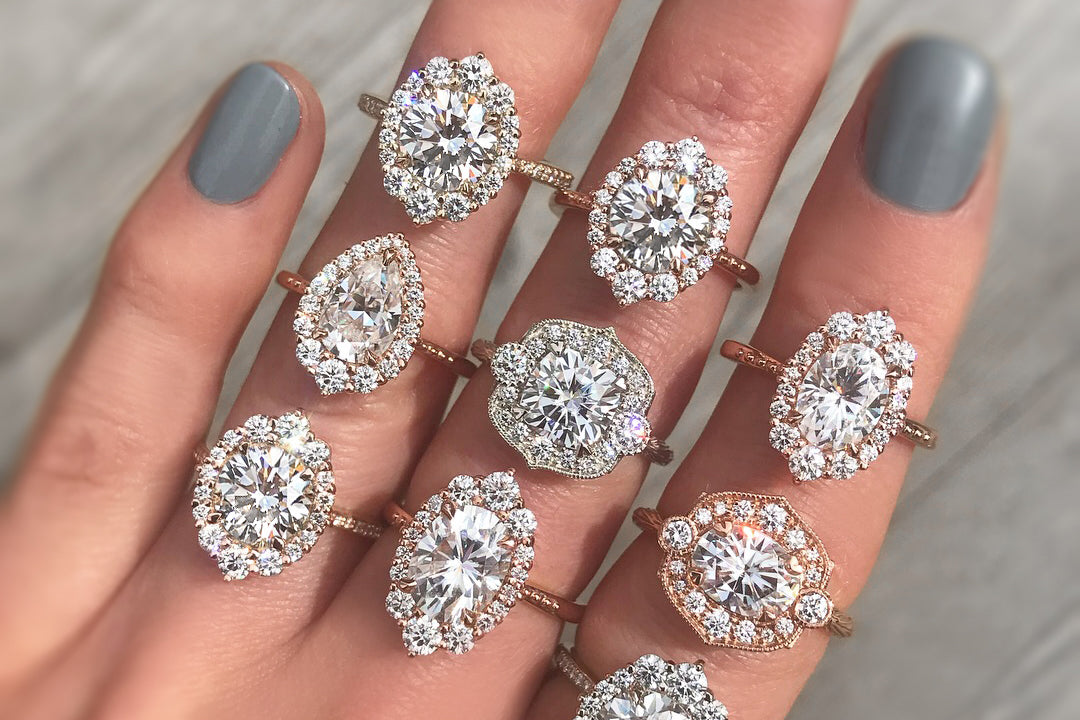
In the world of precious gemstones, diamonds often take center stage. However, sapphires, with their vibrant colors and unique appeal, have carved out a significant place in jewelry collections worldwide. In this article, we will delve into a detailed comparison of sapphires and diamonds, exploring their characteristics, value, and best uses in jewelry.
The Basics: What Are Sapphires and Diamonds?
Sapphires are part of the corundum family, which also includes rubies. While blue is the most iconic color for sapphires, they come in a variety of hues such as pink, yellow, green, and even white. Sapphires are known for their hardness, ranking 9 on the Mohs scale, just below diamonds.
Diamonds, on the other hand, are carbon-based and are renowned for their brilliance and unmatched hardness, scoring a perfect 10 on the Mohs scale. They are traditionally clear, but can also be found in a range of colors, including yellow, pink, and blue.
Appearance and Beauty
In terms of appearance, diamonds are prized for their brilliance and fire—sparkle created by light dispersion. The quality of a diamond’s cut largely determines its sparkle. Sapphires, in contrast, are valued for their rich, saturated colors. The intensity of a sapphire’s color is a key factor in its value, with deeper blues generally considered more desirable.
Durability and Maintenance
Both sapphires vs diamonds are durable, but diamonds are the hardest known natural substance, making them highly resistant to scratches. This makes diamonds ideal for everyday wear, such as in engagement rings. Sapphires, while slightly less hard, are still highly durable and suitable for daily use. They are also less prone to chipping compared to other gemstones.
In terms of maintenance, diamonds require regular cleaning to maintain their sparkle, while sapphires are easier to maintain due to their deep colors, which can hide smudges and dirt more effectively.
Value and Cost
Diamonds tend to be more expensive than sapphires, mainly due to their higher demand and rarity. The price of a diamond is influenced by the “Four Cs”: carat, color, clarity, and cut. Larger diamonds with high clarity and excellent cuts fetch premium prices.
Sapphires, being less common in jewelry markets, generally cost less than diamonds. However, high-quality sapphires, especially those with vivid colors and good clarity, can be quite valuable. It’s worth noting that untreated sapphires (those not treated to enhance color or clarity) are more expensive than treated ones.
Ethical Considerations
Ethical sourcing is a growing concern in the gemstone industry. Diamonds have historically faced scrutiny due to conflicts and unethical mining practices. However lab created diamonds, initiatives like the Kimberley Process aim to ensure that diamonds are ethically sourced.
Sapphires also require ethical sourcing, and many companies are now transparent about their supply chains. Ethical sourcing for both sapphires and diamonds can be a deciding factor for consumers who value sustainability and social responsibility.
Applications in Jewelry
Diamonds are the traditional choice for engagement rings and fine jewelry, largely due to their brilliance and perceived prestige. Sapphires, however, are gaining popularity, especially in unique and colorful jewelry designs. Sapphires can be a great choice for those seeking a distinctive look or who appreciate a splash of color.
Which One Should You Choose?
Choosing between sapphires vs diamonds ultimately depends on personal preference, budget, and intended use. If you desire classic brilliance and are willing to invest more, diamonds are the way to go. If you seek unique colors, affordability, and ethical considerations, sapphires may be the better option.
Conclusion
Both sapphires and diamonds have their unique attributes, and each brings something special to the table. Whether you choose the timeless elegance of a diamond or the vibrant beauty of a sapphire, you are sure to enjoy a stunning piece of jewelry that suits your style and needs.